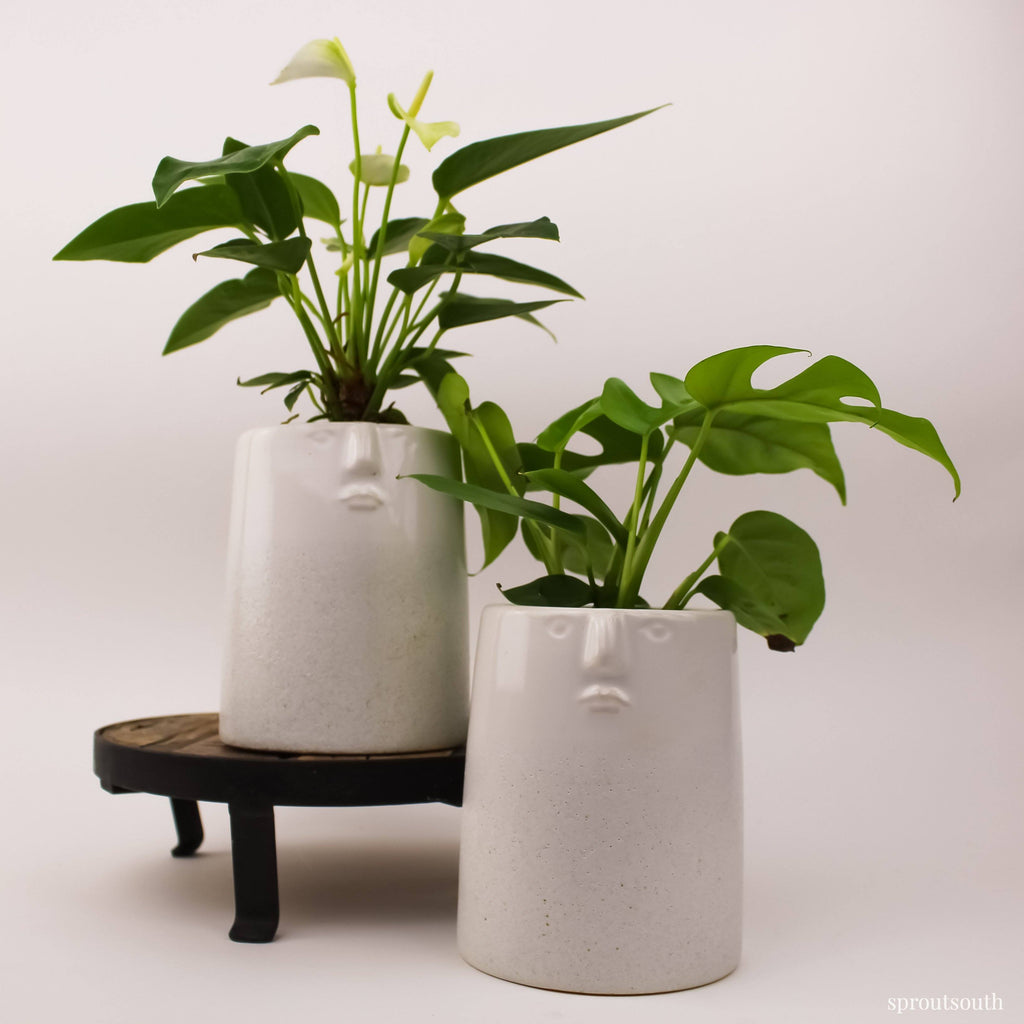Different Types of Monstera Philodendrons & Their Misnomers

Here at SproutSouth’s online plant shop, we carry many different types of monstera philodendron houseplants to suit your fancy. The monstera plant comes in a variety of shapes and sizes.

The two most common varieties are Monstera deliciosa and Monstera adansonii, which are often referred to as “swiss cheese plants.” As their nickname implies, monsteras are easy to identify by the holes and clefts in their dark green leaves. M. deliciosa has large leaves, while M. adansonii has smaller leaves and grows like a vine. Although sometimes called “split-leaf philodendron”, in fact it is not a philodendron at all! 
There is also the “mini monstera”, which is in fact not a monstera, but a rhaphidophora tetrasperma plant. The Tetrasperma plant is an incredibly popular houseplant and very easy to care for, but it is frequently misnamed. It is commonly called the mini monstera, mini monstera philodendron, philodendron ginny, the ginny plant, or climbing monstera. 
Monstera plants, all of the ones in the category, including our misnomers, are some of the most popular indoor houseplants, if social media is to be believed. Monstera plants are very popular houseplants to keep because they grow to an impressive stature, and they have a very unique and beautiful leaf structure that photographs well.
For Philodendrons, we have the Little Hope Philodendron, which is similar to the Monstera Deliciosa but has a wavy leaf shape. The Little hope has very similar care requirements to the Monstera Deliciosa, but grows more quickly.
There is also the Philodendron Cojo Rojo and the Philodendron Cordatum Heartleaf, and the Philodendron Brazil. The Heartleaf Philodendron and the Brazil Philodendron are similar to the Rhaphidophora tetrasperma plant, in that they are vining plants that like to crawl up and down surfaces.

The Philodendron Cojo Rojo is a very easy care plant, and has a beautiful red like color that really makes it unique from it’s other philodendron counterparts.
Do Monstera Plants need a humidifier? Monstera plants in general typically love humid environments, and this is one of the plants that would benefit from a humidifier, especially as leaves are unfurling. Monstera plants are not incredibly fast growing plants, but the wait is most certainly worth the reward.

What type of lighting does a Philodendron plant need? It is best to place monstera plants in a medium-lit to well-lit area with indirect light. Consistent light will improve the growth rates of your monstera plants.
How much water does the indoor philodendron plant need? Thoroughly water your monstera plant every 4-7 days in the summer, but only every 1-2 weeks in the winter. More frequent watering will not increase the growth of your plant - plants need to be watered consistently based on their needs, not just soaked! Let the soil dry out between waterings to really help your monstera thrive and to prevent root rot.

Leave a comment